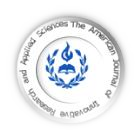
GENERAL INFORMATION

| ISSN: 2429-5396 (e) | www.american-jiras.com | |
| Web Site Form: v 0.1.05 | JF 22 Cours, Wellington le Clairval, Lillebonne | France |
| Web Site Form: v 0.1.05 | JF 22 Cours, Wellington le Clairval, Lillebonne | France |

| HOME | ABOUT US | ARCHIVE | AIMS AND SCOP | AUTHORS | REVIEW | SUMIBMIT MANUSCRIPT | EDITORIAL BOARED | PUBLICATION FEE |
| | ARTICLES | Am. J. innov. res. appl. sci. Volume 11, Issue 3, Pages 137-142 (September, 2020) |
| Research Article 2 |


|
American Journal of innovative
Research & Applied Sciences
Research & Applied Sciences
ISSN 2429-5396 (Online)
OCLC Number: 920041286
OCLC Number: 920041286
| HOME || ABOUT US || ARCHIVES || AIMS AND SCOP || AUTHORS || REVIEW|| SUBMIT MANUSCRIPT || EDITORIAL BOARD || CONTACT US |

| JUJY | VOLUME 11 | N° 3 | 2020 |

| Info-AJIRAS-® Journal ISSN 2429-5396 (Online) / Reference CIF/15/0289M |
American Journal of Innovative Research & Applied Sciences
Authors Contact
*Correspondant author and authors Copyright © 2020:
| Jamelah Salman 1* | and | Abbas Abdulrahman 2 |
Affiliation.
1. Tishreen University | Department of Water Engineering and Irrigation | Lattakia | Syria |
2. Tishreen University | Department of Water Engineering and Irrigation | Lattakia | Syria |
This article is made freely available as part of this journal's Open Access: ID | Salman-Ref.1-ajira140820 |
ABSTRACT
Background: The severe shortage of water sources is one of the most important challenges facing the Middle East region in general and Syria in particular. The continuous increase in population, economic activity and great development causes great pressure on the water resources in this region; on the other hand, a large proportion of this water is wasted from distribution networks, causing losses of money and energy. Objectives: This research aims to assess the current and future water needs of the city of Baniyas from drinking water, in addition to studying the possibility of bridging the gap between need and supply, depending on reducing the rate of losses. Methods: The study relied on conducting field measurements, determining the amount of water produced as well as collecting data related to authorize consumption of bills and others, and then relying on the WEAP21 program for modeling different scenarios. Results: This research finds that the percentage of losses in the Banias water network, reaching 65%, and the best scenario was that the losses were reduced to 30%. Conclusions: The study reveals that if the current situation persists in the presence of the same quantities of water, the gap between the amounts of supply and demand will widen, in addition to that the third scenario (reducing the percentage of losses by leaks) is an appropriate solution to cover the needs of drinking water in the city of Banias.
Keywords: Water need, water losses, weap21.
Background: The severe shortage of water sources is one of the most important challenges facing the Middle East region in general and Syria in particular. The continuous increase in population, economic activity and great development causes great pressure on the water resources in this region; on the other hand, a large proportion of this water is wasted from distribution networks, causing losses of money and energy. Objectives: This research aims to assess the current and future water needs of the city of Baniyas from drinking water, in addition to studying the possibility of bridging the gap between need and supply, depending on reducing the rate of losses. Methods: The study relied on conducting field measurements, determining the amount of water produced as well as collecting data related to authorize consumption of bills and others, and then relying on the WEAP21 program for modeling different scenarios. Results: This research finds that the percentage of losses in the Banias water network, reaching 65%, and the best scenario was that the losses were reduced to 30%. Conclusions: The study reveals that if the current situation persists in the presence of the same quantities of water, the gap between the amounts of supply and demand will widen, in addition to that the third scenario (reducing the percentage of losses by leaks) is an appropriate solution to cover the needs of drinking water in the city of Banias.
Keywords: Water need, water losses, weap21.
BRIDGING THE GAP BETWEEN DRINKING WATER AVAILABILITY AND DEMAND BY REDUCING LOSSES IN BANIAS WATER NETWORK
| Jamelah Salman 1* | and | Abbas Abdulrahman 2 |. Am. J. innov. res. appl. sci. 2020; 11(3):137-142.
| PDF FULL TEXT | | XML FILE | | Received | June 29, 2020 | | Accepted | August 24, 2020 | | Published | September 01, 2020 |
| Jamelah Salman 1* | and | Abbas Abdulrahman 2 |. Am. J. innov. res. appl. sci. 2020; 11(3):137-142.
| PDF FULL TEXT | | XML FILE | | Received | June 29, 2020 | | Accepted | August 24, 2020 | | Published | September 01, 2020 |
*Corresponding author Author & Copyright Author © 2020: | Jamelah Salman 1* |. All Rights Reserved. All articles published in American Journal of Innovative Research and Applied Sciences are the property of Atlantic
Center Research Sciences, and is protected by copyright laws CC-BY. See: http://creativecommons.org/licenses/by-nc/4.0/